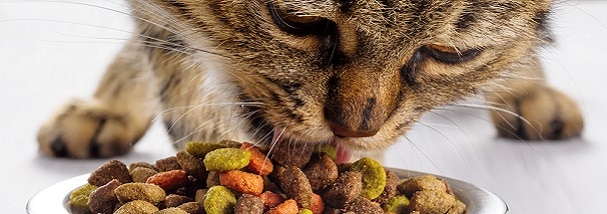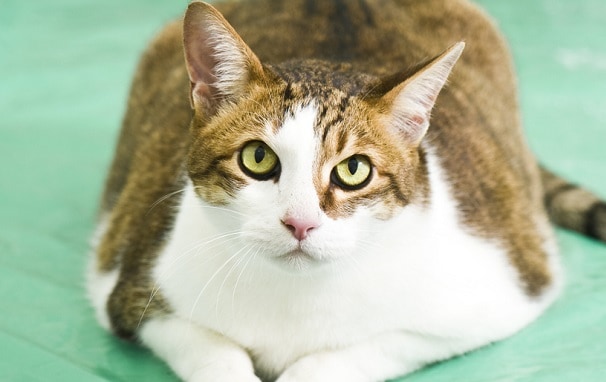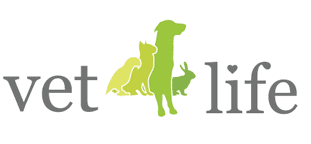 Obesity is a very common disease in cats. It is a serious problem which can lead to other issues, such as diabetes and arthritis. Have a look at this Body Condition Score and see how your cat compares to the healthy ideal. A cat who is of a healthy weight should appear like this:
Obesity is a very common disease in cats. It is a serious problem which can lead to other issues, such as diabetes and arthritis. Have a look at this Body Condition Score and see how your cat compares to the healthy ideal. A cat who is of a healthy weight should appear like this:
- Ribs felt easily and may or may not be seen with a thin layer of overlying fat
- A clear waistline can be seen
- A very slight belly present and a tiny fat pad may be felt
Cats are generally quite sedentary animals. Many owners can honestly say their cat sleeps for nearly all the hours of the day! This means that their nutritional requirements are much lower, and it's easy to feed them too much.
How much you should be feeding your cat depends on factors such as their size, weight, breed, gender and age. A neutered cat will need less food than an unneutered one because their metabolic and hormonal balances will have changed. An indoor cat will need less food than a cat that goes outdoors.
An average 5kg cat needs about 280 calories a day. A big cat, such as a Maine Coon, who could well weigh up to 10kg, may need almost double this. We recommend a veterinary recommended dry food diet, such as Royal Canin. Portion sizes are suggested on the packaging but roughly one cup per day is a sensible amount.
Some owners give their cat a couple of meals a day, whereas others will leave out a bowl of food. Be aware that in a multi-cat household, "free-feeding" might not be the best strategy since one cat could gobble all the food, leaving none for the others!
 Check your cat's physique regularly if you think he or she is putting on too much weight. Our staff are happy to advise you on your cat's weight and we offer free weight management clinics here at your local Vet4life in Teddington, Shepperton or Surbiton. Contact us for more information.
Check your cat's physique regularly if you think he or she is putting on too much weight. Our staff are happy to advise you on your cat's weight and we offer free weight management clinics here at your local Vet4life in Teddington, Shepperton or Surbiton. Contact us for more information.


